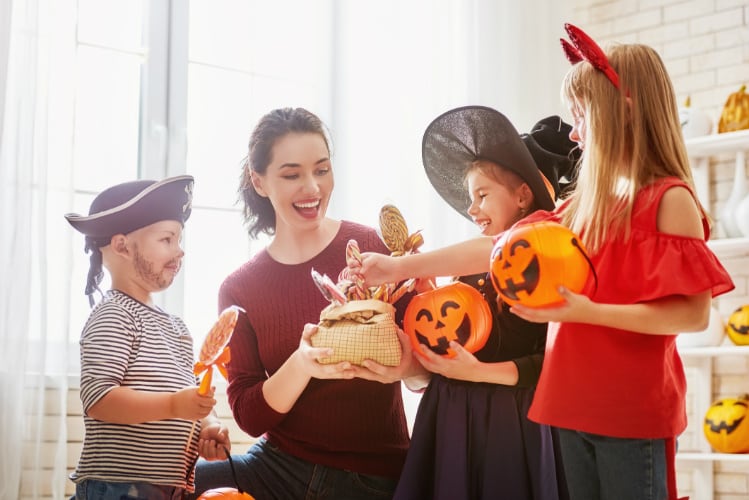This effort follows NCA’s support of candy manufacturers’ five-year deal with the Partnership for a Healthier America, which has led to a major shift in pack sizes and easy-to-find calorie information. (By 2022, half of the products sold by NCA’s members will be no more than 200 calories.)
Nearly $10bn of the candy industry’s $35bn in US sales occurs around Halloween.
Similar to other holidays, 94% of Americans say chocolate and candy make these occasions more fun, according to NCA survey data. But the trade association wants to ensure that consumers enjoy these treats responsibly.
“Chocolate and candy companies play an important role in time-honored and fun holiday traditions and special moments like Halloween," said NCA president and CEO John Downs. "As consumers enjoy chocolate and candy this Halloween season and seek to boost their emotional wellbeing, we are helping them manage their sugar intake and provide them with the resources they need to make informed choices."
Safety first
Halloween Central also shares tips for families to have a safe holiday, especially one where kids are dressed in costumes and walking through neighborhoods.
The NCA suggests adding reflective tape to costumes, carrying a flashlight, and accepting (and examining) only wrapped/packaged candy.
Plan ahead of Halloween, and keep the conversation going
Nine of 10 parents already use the October holiday as fodder to discuss informed choices with their kids, the NCA has found, but it will likely prove more effective if the conversation starts when the first pumpkin pops up.
"We know that people look for more support in navigating this candy moment, which is why Halloween Central is so helpful to consumers," Carly Schildhaus, an NCA spokesperson, told ConfectioneryNews.
Routine and portion control also play an important role in finding balance during and after trick-or-treating. The NCA recommends eating a nutrition-packed meal as a family before knocking on doors and portioning out candy (two or three pieces per serving) post-Halloween.
More than eight in 10 Americans say they hand out miniature candies, according to a recent NCA survey. Most respondents reported a general Halloween preference for candy corn and chocolate.
"In recent years, we’ve seen the industry move towards smaller package sizes in an effort to help people manage their sugar intake. This is also reflected in consumer behavior around Halloween," Schildhaus added, pointing to that miniature candy choice.

The holiday can double as a teaching moment, too: parents can let kids partake in deciding where and when to enjoy their Halloween loot – less through restriction and more through educating youth on ‘the role small amounts of treats can play in a happy, balanced lifestyle.’
Along those lines, slowing down and taking the time to enjoy these treats is paramount. Pairing a couple pieces of candy with whole grain cereal, fruit or nuts is another way to display balance.
Halloween also offers an opportune time to promote sharing (and regular teeth-brushing!). According to NCA data, nearly half of parents maintain a house-rule that half of candy must be shared.
And last but not least, the NCA says that families should remember that Halloween is just one night; achieving a balanced diet and a healthy lifestyle happens over time.
Halloween through the ages

Originally a Celtic affair, Halloween has evolved from a harvest celebration to the modern trick-or-treating, costume-laden version we know today.
Folklore postulates that the Celts believed the spirits of the dead passed through Earth on the night now known as All Hallows’ Eve. Disguised to escape potential harm, they would place food and drink on doorstep after doorstep to sustain the spirits on their journey.
Some also carved turnips or rutabagas – dense root vegetables, not far from today’s pumpkin or gourd carvings – with faces, perhaps the original jack-o-lantern. The pumpkin originated in Mexico about 9,000 years ago.
As Christianity spread throughout Europe, the pagan tradition became All Saints’ Day, and settlers carried the lore to North America. Irish immigrants allegedly tied the idea of ghosts, goblins and witches to the holiday.
It was still considered a celebration of the autumn harvest until about the 1950s, when the concept of trick-or-treating was popularized.




